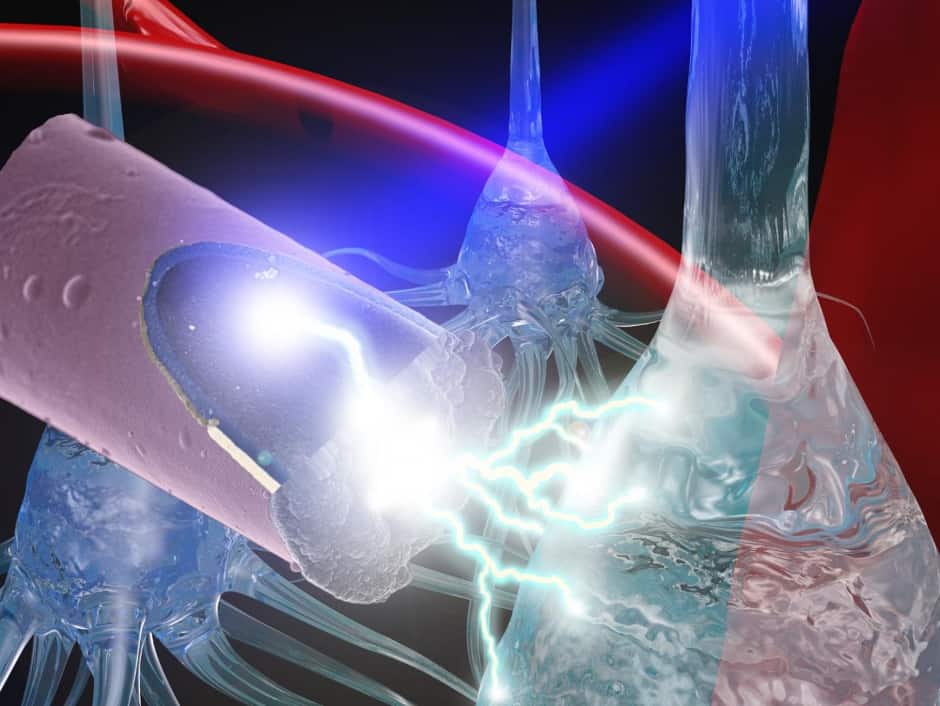Untethered electrode sheds light on therapeutic uses of neural stimulation

Researchers at the University of Pittsburgh have developed a method of neural stimulation that uses an untethered electrode activated by light, an advance that could mitigate damage done by implanted devices.

Neural stimulation can provide therapeutic effects in neurological disorders like Parkinson's disease, but implanted devices deteriorate over time and can cause scarring in neural tissue.
"Typically with neural stimulation, in order to maintain the connection between mind and machine, there is a transcutaneous cable from the implanted electrode inside of the brain to a controller outside of the body," said Takashi Kozai, an assistant professor of bioengineering at the university’s Swanson School of Engineering. "Movement of the brain or this tether leads to inflammation, scarring, and other negative side effects. We hope to reduce some of the damage by replacing this large cable with long wavelength light and an ultra small, untethered electrode."
Register now to continue reading
Thanks for visiting The Engineer. You’ve now reached your monthly limit of news stories. Register for free to unlock unlimited access to all of our news coverage, as well as premium content including opinion, in-depth features and special reports.
Benefits of registering
-
In-depth insights and coverage of key emerging trends
-
Unrestricted access to special reports throughout the year
-
Daily technology news delivered straight to your inbox










National Gas receives funding to develop Gravitricity underground hydrogen storage system
One single rock salt mine - Winsford - has 23 <i>MILLION </i>cubic metres of void and even allowing for 10% of that void set aside for hazardous waste...